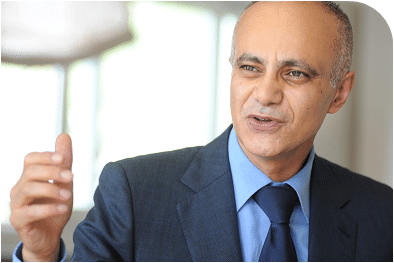Editor’s Note: Welcome to our weekly Reality Check column where C-level executives and advisory firms from across the mobile industry share unique insights and experiences.
Looking into the future of a technology is like trying to predict the life of a newborn. There are few certainties, which come from the genetic makeup of the child, but as any parent knows, the vast majority of the child’s characteristics will evolve over time. Today “5G” is not yet a newborn; and we, as its parents, are still trying to define its genetic makeup. As it is impossible to predict all the use cases of the future, we need to ensure that the DNA of 5G is as flexible as possible while it maintains the dependability of the previous generation of mobile networks. The flexibility and dependability characteristics of 5G together will ensure that this network will be a common fabric used to run a wide variety of innovative applications.
I have been fascinated by the mobile industry for years and have seen firsthand how it can improve and transform lives. Today, the unstoppable demand for mobile data and for a better mobile broadband experience is encouraging the industry to look ahead at how future networks can be readied to meet extreme capacity and performance needs of both existing and emerging classes of applications. NSN, along with other industry partners, believes that communication systems beyond 2020 will involve a combination of existing and evolving systems, like LTE-Advanced and Wi-Fi, coupled with new, revolutionary technologies designed to meet new requirements, such as virtually zero latency to support tactile Internet, machine control or augmented reality.
So, it is no surprise that the industry is looking at 5G – a hot topic in 2013. Some 5G related announcements jumped the gun and some claimed that market-ready 5G products were ripe for launch. This obviously isn’t the case since 5G standardization hasn’t even started yet.
There are more questions than answers as to what 5G will become, and what applications will need to be supported. What we do know is 5G will be the set of technical components and systems needed to overcome the limits of current systems. Possible performance targets for 5G could be to provide 10,000-times more capacity, serve 10- to 100-times more devices, reduce the latency to less than one millisecond, with greater than 10-gigabits per second peak rate and make more than 100 megabits per second available everywhere.
Further, 5G networks need to provide this level of performance without increasing the total energy consumption. Unlike previous generations, it is unlikely that 5G will be a single new radio access technology or replace macro cells. It will be a combination of existing RATs in both licensed and unlicensed bands, plus one or more novel RATs optimized for specific deployments, scenarios and use cases. Our vision at NSN is that 5G will enable a scalable service experience anytime and everywhere with virtual zero latency delivering a gigabit experience.
NSN is already undertaking extensive research to map out the scope of 5G and has a clear vision of the three key enablers that will make this future network a reality.
Spectrum
Additional radio spectrum for mobile networks needs to be allocated and put into use quickly if we are to meet the increased capacity and coverage demand which will be placed on 5G. This means looking at new spectrum bands such as millimeter wave and centimeter waves, and using available spectrum much more efficiently. Without sufficient spectrum, communities beyond the reach of wired broadband will miss out on the benefits of future and online services.
Density
It is increasingly clear that in 5G we will need to use many more base stations to meet the performance needs of future applications. These dense networks will be deployed as heterogeneous networks, combining macro sites with smaller base stations and using a range of radio access technologies including LTE-A, Wi-Fi and any future 5G technologies. Furthermore, these technologies will be used in macro, small and super small cells and will integrate the various radio technologies flexibly and in various combinations.
Performance
In 5G the best possible network performance will not be just about peak speed. It will be about a wide range of performance measures to meet individual requirements imposed by each use case. For example, some real-time applications, such as driverless cars, will require virtually zero latency, while others, such as 3D video capture, will be more tolerant to latency but will require high capacity upload instead.
5G research at full speed
I believe 5G will be a great opportunity to create a universal platform for innovation, allowing diverse industries and communities to expand the benefits of mobile communication and improve lives globally. Collaboration in research and standardization is essential for building a successful 5G ecosystem and this collaboration must include the wider community of IT developers, diverse industry verticals, and policy makers. NSN is already advanced in its 5G research, including partnerships with key universities around the world, leading the work on heterogeneous deployments as part of the EU collaborative research project METIS, founding and chairing European Union-funded 5G PPP, collaboration within the Radio Telecommunication Sector of the International Telecommunication Union (ITU-R), and cooperation on 5G/IMT-2020 with the China Academy of Telecom.
The next milestone is the Brooklyn 5G Summit April 23-25 in New York, which is organized by NSN and New York University. The Summit will bring together wireless/mobile industry research and development leaders from both academia and business to explore the future of 5G wireless technology with a special focus on antenna, propagation and channel modeling.
2013 was the year in which 5G talk and hype began, 2014 will be the year of increased collaboration – if we want the 5G standards to be as good as LTE, the industry needs to start joint discussions on what 5G should become. We’re excited to be a part of it.

